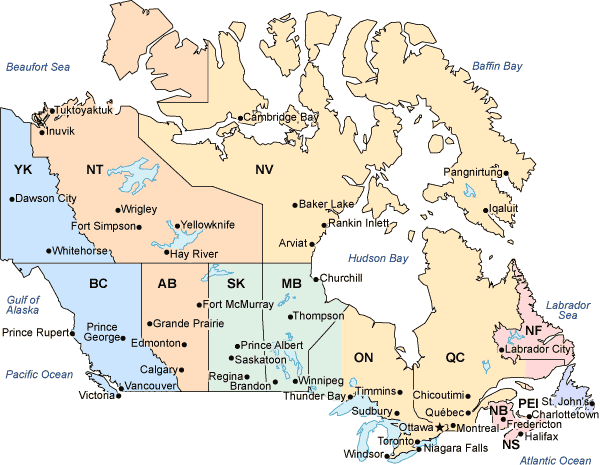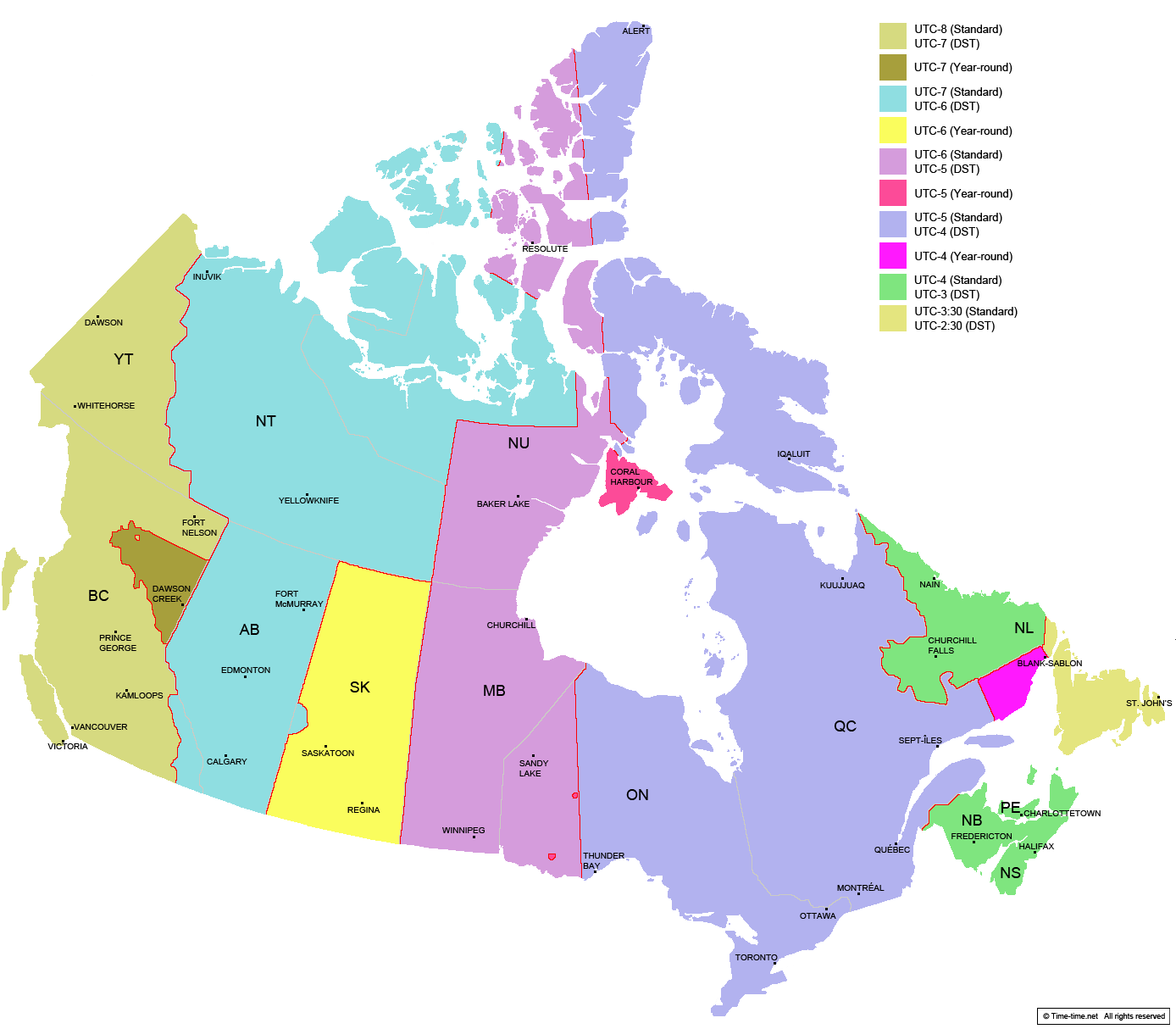From WorldWeb Travel Guide:
Canadian Standard (Winter) Time, October 26, 2003- April 3, 2004
Daylight (Summer) Time: see below
Pacific
 |
Mountain
 |
Central
 |
Eastern
 |
Atlantic
 |
Nfld
 |
|
 |
Canada has six time zones:
Newfoundland Standard Time (NST) 3 ½ hours from Greenwich
Atlantic Standard Time (AST) 4 hours from Greenwich meridian
Eastern Standard Time (EST) 5 hours from Greenwich meridian
Central Standard Time (CST) 6 hours from Greenwich meridian
Mountain Standard Time (MST) 7 hours from Greenwich meridian
Pacific Standard Time (PST) 8 hours from Greenwich meridian
Some provinces use Daylight Saving Time: In 2004 the
clocks were turned forward by one hour on the first Sunday of April and turned back on the last Sunday of October. Since only some parts of the country practice Daylight Saving Time, time zones look very different in summer.
Many people wonder why Newfoundland has a time zone that is a half hour different rather than one hour. The system of
Standard Time employs 24 meridians and each are theoretically the centres of 24 Standard Time zones. Newfoundland lies squarely in the eastern half of its time zone. Newfoundland is not the only place in the world where half hour time differences are seen. Suriname, Iran, India, Sri Lanka, and Central Australia also operate on this difference.
|

